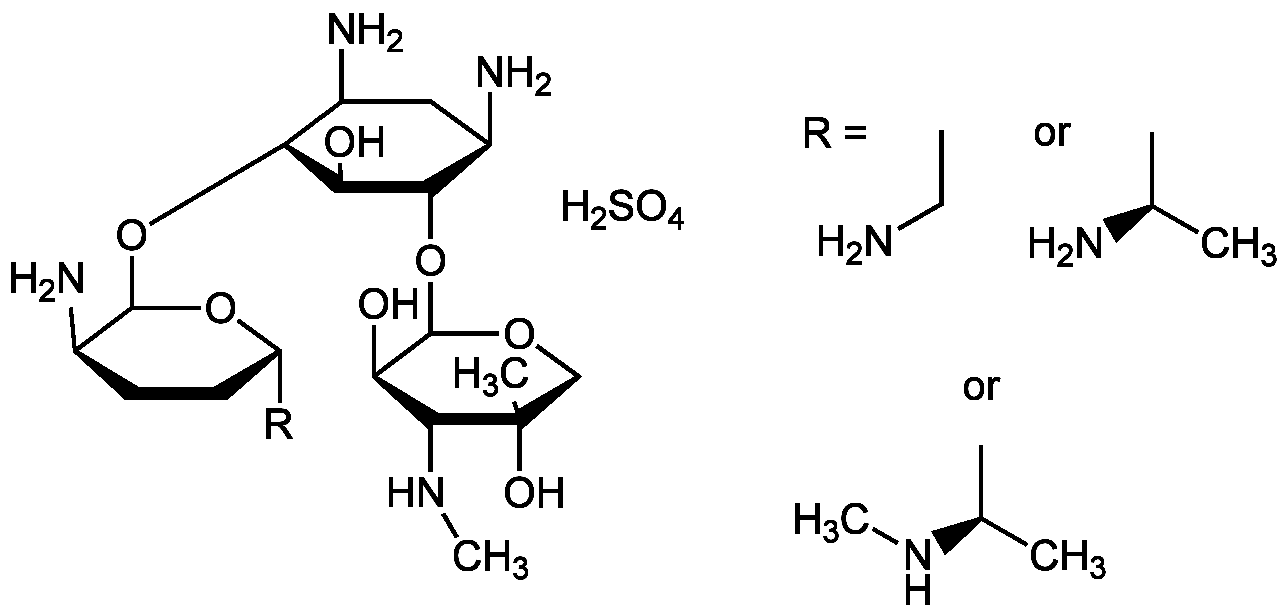
Chemical Structure
Gentamicin sulfate (USP Grade)
AG-CN2-0066
Overview
- SupplierAdipoGen Life Sciences
- Product NameGentamicin sulfate (USP Grade)
- Delivery Days Customer10
- CAS Number1405-41-0
- CertificationResearch Use Only
- Hazard InformationDanger
- Molecular FormulaC21H43N5O7 . H2SO4 (unspecified)
- Molecular Weight575.6
- Scientific DescriptionAminoglycoside antibiotic. Protein synthesis inhibitor. Causes codon misreading by binding to the 30S ribosomal subunit, blocking the translocation of peptidyl-tRNA from the acceptor site to the donor site. Antibacterial against Gram-negative aerobic bacteria, Gram-positive bacteria and mycoplasmas. Used as a selection agent (gentamicin-resistance gene) in molecular biology applications. Broad-spectrum cell culture antibiotic that is nontoxic to viruses and mammalian cells at antibacterial and antimycoplasmal concentrations. Due to its extended stability and slow development of bacterial resistance, it is a useful antibiotic in long-term virus und tissue culture studies. Bactericidal effects are exerted by the binding to the outer membrane, causing disruption of the membrane. This increases the permeability of the cell envelope, leakage of cell contents, and leading to apoptosis and proteolysis (cell death). Causes also cell death by generation of free radicals, phospholipidosis, extracellular calcium-sensing receptor stimulation and energetic catastrophe. - Chemical. CAS: 1405-41-0. Formula: C21H43N5O7 . H2SO4 (unspecified). MW: 575.6. Isolated from Micromonospora sp. Aminoglycoside antibiotic. Protein synthesis inhibitor. Causes codon misreading by binding to the 30S ribosomal subunit, blocking the translocation of peptidyl-tRNA from the acceptor site to the donor site. Antibacterial against Gram-negative aerobic bacteria, Gram-positive bacteria and mycoplasmas. Used as a selection agent (gentamicin-resistance gene) in molecular biology applications. Broad-spectrum cell culture antibiotic that is nontoxic to viruses and mammalian cells at antibacterial and antimycoplasmal concentrations. Due to its extended stability and slow development of bacterial resistance, it is a useful antibiotic in long-term virus und tissue culture studies. Bactericidal effects are exerted by the binding to the outer membrane, causing disruption of the membrane. This increases the permeability of the cell envelope, leakage of cell contents, and leading to apoptosis and proteolysis (cell death). Causes also cell death by generation of free radicals, phospholipidosis, extracellular calcium-sensing receptor stimulation and energetic catastrophe.
- SMILESCCN.CC(C)N.CNC(C)C.OS(O)(=O)=O.CN[C@H]1[C@@H](O)C(OC2[C@H](N)CC(N)[C@H](OC3O[C@H]([*])CC[C@H]3N)[C@H]2O)OCC1(C)O
- Storage Instruction2°C to 8°C
- UNSPSC12352200


![Gentamicin sulfate [1405-41-0]](https://www.targetmol.com/group3/M00/37/FA/CgoaEGayVISEcqZhAAAAAOIQDhQ306.png)